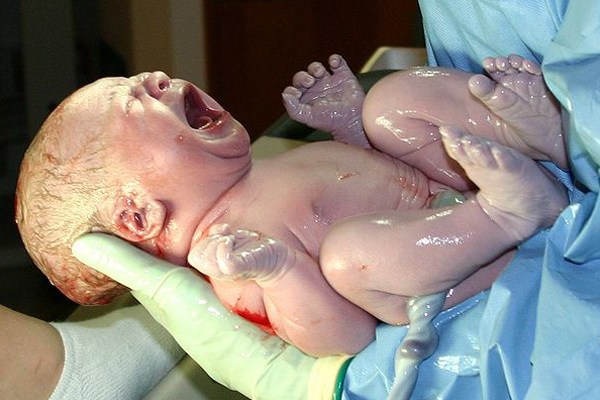
Why Are More Boys Born Than Girls?

Worldwide, there are 107 boy babies born for every 100 girl babies. This skewed ratio is partly due to sex-selective abortion and "gendercide," the killing of female infants, in countries such as China and India where males are more desired. But even discounting those factors, the completely natural male-to-female sex ratio still hovers around 105:100, meaning that women are inherently more likely to give birth to boys. Why?
Several factors influence whether a sperm containing a Y sex chromosome or one containing an X chromosome will be first to fertilize an egg, including parental ages, their environmental exposure, stress, the stage in the mother's ovulation cycle and even whether she has had children previously; all these forces combine to set the average sex ratio at fertilization at 105:100. But what good is this built-in bias?
Many demographers have speculated that the gender imbalance at birth may be evolution's way of evening things out overall. Male infants more often suffer from health complications than female infants. The disadvantage runs to adulthood, too, as adult men kill each other more often, take more risks and have more health problems, on average, than women, all of which cause them to die younger. This doesn't balance the sex scales exactly, but it does come close: Among the total human population, the ratio of men to women is 101:100. [Why Do We Have Sex? ]
Why isn't the ratio perfectly even? Well, it is in the United States, all of Europe, Australia and many other developed countries (in fact, these countries have slightly more adult women than men). The small bias toward males that remains in the sex ratio of the total world population probably results from social factors hinted at earlier: abortion of female fetuses and gendercide in Southeast Asia and much of the Middle East, where, in general, there is a strong cultural preference for males.
Equally intriguing as our species' slight gender imbalance at birth is the issue of why there ought to be a balance, or near-balance, in the first place. Men produce an ungodly amount of sperm , while women have a finite egg count. As far as evolution is concerned, why couldn't humanity make do with fewer men and more women?
The widely-accepted answer to this question was first put forth by Sir Ronald Fisher, a renowned evolutionary biologist who worked in the first half of the 20th century. Fisher's Principle holds that differences in the sex ratio will tend to diminish over time because of the reproductive advantage automatically held by members of the minority sex. [What If There Were More Than Two Sexes? ] Suppose, for example, that male births were far less common than female births. If this were the case, then newborn males would naturally have better mating prospects than newborn females, and could expect to have more offspring. Parents who are genetically disposed to produce males will thus tend to have more grandchildren, and so their male-producing genes will spread, and male births will become more common. Gradually the population will approach a gender balance.
Follow Natalie Wolchover on Twitter @nattyover. Follow Life's Little Mysteries on Twitter @llmysteries, then join us on Facebook.
Sign up for the Live Science daily newsletter now
Get the world’s most fascinating discoveries delivered straight to your inbox.
Natalie Wolchover was a staff writer for Live Science from 2010 to 2012 and is currently a senior physics writer and editor for Quanta Magazine. She holds a bachelor's degree in physics from Tufts University and has studied physics at the University of California, Berkeley. Along with the staff of Quanta, Wolchover won the 2022 Pulitzer Prize for explanatory writing for her work on the building of the James Webb Space Telescope. Her work has also appeared in the The Best American Science and Nature Writing and The Best Writing on Mathematics, Nature, The New Yorker and Popular Science. She was the 2016 winner of the Evert Clark/Seth Payne Award, an annual prize for young science journalists, as well as the winner of the 2017 Science Communication Award for the American Institute of Physics.










